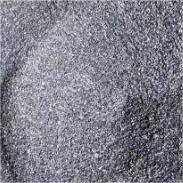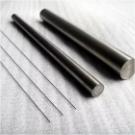**Title: Zinc Plate Magic: Your Garage Guide to Rust-Proofing Metal**
(How To Zinc Plate Metal At Home)
Ever find a perfect old tool or car part, only to see it slowly eaten by rust? That frustration sparked my own dive into zinc plating. Forget thinking it’s just for factories. With some basic gear and careful steps, you can absolutely zinc plate metal right in your garage or workshop. It’s about giving metal a super-thin, invisible shield against corrosion. Think of it like armor plating for your favorite bolts, brackets, or tools. Ready to stop rust in its tracks and make things last? Let’s get plating.
**1. What Zinc Plating Means**
Zinc plating is a protective coating. You apply a layer of zinc metal onto steel or iron. This layer acts like a shield. The zinc sacrifices itself slowly to protect the base metal underneath from rust and corrosion. It’s called a sacrificial coating. The process involves cleaning the metal thoroughly, then dipping it into a special solution containing dissolved zinc. Electricity flows through the solution. This causes the zinc to stick firmly to the metal surface. The result is a bright, silvery-gray finish. This finish is both attractive and functional. Zinc plating is very common. You see it on car parts, hardware like nuts and bolts, tools, and many everyday metal objects. It’s a key defense against the elements.
**2. Why Bother Zinc Plating at Home?**
Rust ruins metal. It weakens structures and makes things look terrible. Zinc plating stops rust effectively. Doing it yourself saves serious money. Professional plating services add up fast, especially for small batches or hobby projects. Home plating gives you control. You choose the finish thickness. You plate exactly the parts you need, when you need them. No waiting for a commercial shop. Restoring old car parts, motorcycle components, or vintage tools becomes feasible. Protecting custom-made brackets or fittings is simple. There’s real satisfaction in taking a rusty, neglected piece and making it look and function like new. Plus, knowing you’ve added years of life to it feels great. It’s practical skill building.
**3. How to Zinc Plate Metal Step-by-Step**
Safety first. Always wear gloves and eye protection. Work in a well-ventilated area. Acid fumes are dangerous. Gather your supplies: a plastic tub for the plating bath, a zinc plating kit (includes zinc anode, plating solution, degreaser, acid pickle), a battery charger (6-12 volts DC), wires with alligator clips, distilled water, baking soda for neutralizing waste, and containers for cleaning steps. Follow these steps carefully:
1. **Clean the Metal:** Remove all grease, oil, and dirt. Use a strong degreaser and scrub well. Rinse completely with clean water. Any contamination ruins the plating.
2. **Acid Pickling:** Dip the metal into the acid pickle solution. This removes rust, scale, and old finishes. It also etches the surface so the zinc sticks better. Leave it in only as long as needed (usually minutes). Rinse *extremely* well with water. Any acid left will spoil the bath.
3. **Setup the Plating Bath:** Pour the plating solution into your plastic tub. Hang the zinc anode (the positive +) on one side. Connect the RED wire from your charger to it. Connect the BLACK wire (negative -) to the part you want to plate. Ensure the part doesn’t touch the anode. Submerge the part fully in the solution.
4. **Apply Power:** Turn on the battery charger. You want a low current. Adjust the charger settings or distance between part and anode if needed. You should see small bubbles forming on the part. This is hydrogen gas. A smooth, even gray/silver coating will start to appear. Plating time varies. It depends on the part size and desired thickness. Start with 10-30 minutes. Check progress.
5. **Rinse and Dry:** Once coated, turn off the charger. Remove the part. Rinse it immediately and thoroughly in clean water. Then rinse it in distilled water. This prevents water spots. Dry the part completely with a clean cloth or compressed air. Avoid touching the fresh plating too much.
6. **Passivation (Optional but Recommended):** Some kits include a yellow or blue chromate solution. Dipping the plated part into this adds extra corrosion resistance. It also gives the classic yellow/gold or blue/silver finish. Rinse and dry again after this step.
**4. Applications for Your Home Zinc Plating**
What can you actually plate? The list is surprisingly long. Automotive restoration is a big one. Think bolts, brackets, clamps, hood hinges, suspension parts, and small fasteners. Motorcycle parts like engine covers, brake components, and exhaust brackets benefit hugely. Hardware restoration is perfect. Revive old wrenches, pliers, screwdrivers, drill bits, and saw blades. Garden tools like shears, trowels, and pruners last much longer plated. Home projects often involve custom brackets or fittings – plate them for durability. Hobbyists plating model parts, RC car components, or metal craft items find it invaluable. Essentially, any cleanable steel or iron part that fits in your bath and needs rust protection is a candidate. Avoid plating things that see extreme heat or constant immersion in saltwater; other coatings are better there.
**5. Zinc Plating FAQs**
**Q: Is home zinc plating strong?**
A: Yes, done right, it provides excellent rust protection for typical garage, workshop, or household use. It’s comparable to basic commercial plating. It’s not for underwater or constant salt spray though.
**Q: How long does the plating last?**
A: It depends on the environment. Indoors, it can last decades. Outdoors on a car, expect several years of good protection, especially with a chromate passivation layer. Thicker plating lasts longer.
**Q: Can I plate rusty metal?**
A: No. You must remove ALL rust first. The acid pickle step helps, but heavily rusted parts need sandblasting or wire wheeling first. Plating only works on clean, active metal.
**Q: Why is my plating blotchy or not sticking?**
A: Poor cleaning is the main culprit. Grease, oil, or invisible residues prevent adhesion. Insufficient rinsing after acid pickling is another common cause. Contaminated plating solution or incorrect voltage/current can also cause problems.
**Q: What do I do with the used chemicals?**
A: Never pour them down the drain! This is crucial. Collect used acid pickle and plating solution in separate containers. Neutralize acids with baking soda slowly until they stop fizzing. Check local hazardous waste disposal rules. Many communities have drop-off days for household chemicals.
**Q: Can I plate other metals besides steel?**
A: Zinc plating primarily protects steel and iron. It generally won’t work well on stainless steel, aluminum, copper, or brass. These metals require different plating processes. Stick to ferrous metals (those containing iron).
**Q: How thick is the zinc layer?**
(How To Zinc Plate Metal At Home)
A: Home plating typically achieves 0.0001 to 0.0003 inches. It’s very thin. Time in the bath controls thickness. Longer plating times build thicker layers. Watch for roughness if plating too long.
Inquiry us
if you want to want to know more, please feel free to contact us.


